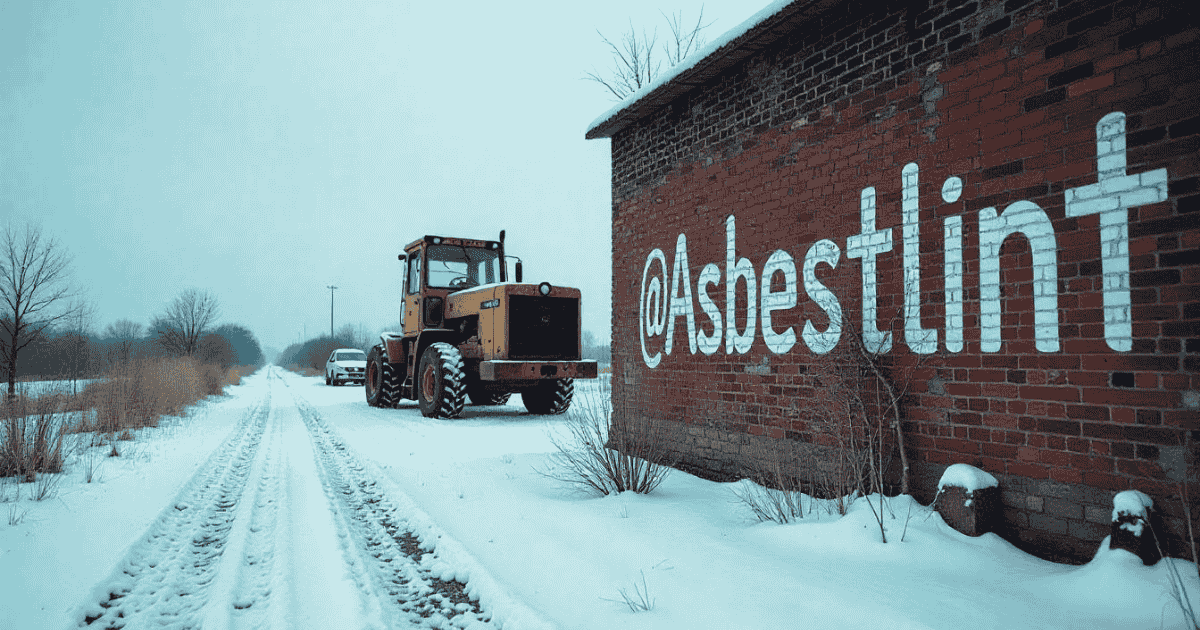Asbestlint: Everything You Need to Know About
Handling hazardous materials like asbestlint is a critical issue, especially for those working in older buildings or homes. While the term may sound technical or unfamiliar, understanding what asbestlint is and learning how to manage it properly is essential for maintaining a safe and healthy environment.
This guide provides a clear, step-by-step explanation of asbestlint, its risks, and how to deal with it effectively. By the end of this guide, you’ll have all the knowledge you need to identify and manage material, ensuring the safety of yourself, your family, or your team.
What Is Asbestlint?
Asbestlint refers to microscopic fibers that come from asbestos-containing materials. These fibers are not visible to the naked eye but can be released into the air when asbestos materials are disturbed, damaged, or deteriorating.
Widely used in construction and manufacturing during the 20th century, asbestos was prized for its durability and resistance to heat. However, as scientific research uncovered the severe health risks caused by exposure to asbestos, its use became heavily restricted or banned in many countries.
Why Is Asbestlint Dangerous?
The primary concern with asbestlint lies in the health risks associated with inhalation of its fibers. Once lodged in the lungs, these fibers cause inflammation and scarring, leading to long-term respiratory problems. The following are some of the notable health issues connected to material exposure:
- Mesothelioma: A rare but aggressive cancer that develops in the lining of the lungs or abdomen and is directly linked to asbestos exposure.
- Lung Cancer: Continuous inhalation of asbestlint over time significantly increases the risk of lung cancer.
- Asbestosis: A debilitating condition that causes scarring of lung tissues, leading to breathing difficulties and other complications.
The latency period for asbestos-related diseases is long, often spanning decades. This prolonged timeframe highlights the importance of addressing asbestlint promptly to avoid potential health repercussions.
How to Identify the Presence of Asbestlint
Before taking action, it’s critical to determine whether asbestlint exists in your building. Start by assessing whether the structure was built before the 1990s since older properties are more likely to include asbestos-containing materials. If you suspect asbestos could be present, follow these key steps to identify it safely and effectively:
Visually Inspect High-Risk Areas
Inspect areas like insulation systems, roofing sheets, floor tiles, and pipe fittings. Cracks, damage, or wear in these materials could indicate the potential release of asbestlint.
Conduct Professional Testing
Hire a certified asbestos inspector to analyze samples from suspected areas. Professional testing ensures accurate results without risking personal exposure to hazardous fibers.
Check Building Records
Review construction documentation, if available, as it may highlight which materials were used and whether they contain asbestos.
Managing and Removing Asbestlint Safely
If you confirm the presence of asbestlint, it’s vital to address the issue without delay. Improper handling can make the problem worse by releasing more fibers into the air. Below is a step-by-step approach to managing material safely and effectively.
Do Not Disturb
Under no circumstances should you attempt to cut, break, or dismantle materials containing asbestos. Disturbing these materials increases the likelihood of releasing material into the air.
Consult Certified Professionals
Enlist the services of trained professionals who are equipped to deal with asbestos-related risks. Certified asbestos removal specialists follow strict guidelines to minimize exposure during the handling and disposal process.
Isolate Affected Areas
For safety, limit access to areas where material has been identified. Sealing off affected rooms and implementing proper containment measures prevents fibers from spreading.
Use Proper Tools and Equipment
Specialized tools, including respirators and HEPA vacuums, are crucial when managing asbestos-containing materials. These tools help capture and contain fibers, reducing exposure risks.
Disposal of Materials Containing Asbestlint
Safe disposal is a vital part of managing materials effectively. Simply discarding asbestos materials in household bins is both illegal and unsafe. Instead, follow these best practices to ensure proper disposal:
Seal Materials Thoroughly
Professionals will double-bag asbestos waste in airtight, government-approved bags or containers to prevent fiber release during transportation.
Transport to a Designated Facility
Dispose of asbestos waste only at authorized facilities equipped to handle hazardous materials. Always comply with local environmental regulations.
Maintain Documentation
Keep all records related to asbestos testing, removal, and disposal for future reference. These documents might be required by local authorities or for insurance claims.
Preventing Future Risks
While managing existing asbestlint is crucial, preventing future hazards is equally important. Here are several steps you can take to avoid further risks:
- Regular Monitoring: Even if materials are stable, monitor them periodically for signs of damage or wear.
- Maintain Good Ventilation: Proper airflow reduces fiber concentration if minimal release occurs.
- Avoid Renovating Without Inspection: Major repairs or remodeling in older buildings should only begin after an asbestos assessment.
- Educate Yourself and Others: Share knowledge about asbestlint with family members, tenants, or coworkers to ensure everyone understands its risks.
The Importance of Professional Help
Although DIY solutions might seem tempting to save money, managing asbestlint is not a task for untrained individuals. Not only does professional assistance guarantee proper handling and compliance with regulations, but it also minimizes the risks to your health and safety.
Certified specialists undergo rigorous training to use advanced techniques and equipment, ensuring that fibers are safely removed or managed. Their expertise helps reduce the chances of contamination and protects the long-term well-being of occupants in the affected area.
Final Words
Addressing asbestlint is vital for maintaining a healthy environment, whether in your home, workplace, or public space. By identifying its presence, taking swift action to manage hazardous materials, and relying on professional assistance, you can eliminate the dangers posed by asbestos exposure.
Take proactive steps today to secure safer spaces and protect your health in the long run. Proper handling of asbestlint isn’t just a precautionary measure—it’s an investment in the safety and well-being of everyone involved.












Post Comment